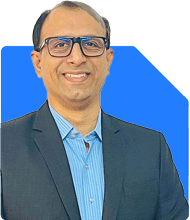Mahesh Padmanabhan | Answer |Ask -Follow
Tax Expert - Answered on May 05, 2023
He is a member of The Institute of Chartered Accountants of India and has a degree in cost accounting from the Institute of Cost Accountants of India.
He is also a qualified information systems auditor. ... more

what will happened if any flat owner is regular income tax payer but not aware / knowledge about the TDS and purchased a higher value flat from builder without any TDS deduction?
Ignorance of law does not bring any relief to the flat owner. The penal consequences would apply in this case and the following provisions are applicable:
Penal Interest is applicable from the date on which the deduction was to be made. The rate of penal interest would be 1.5% p.m if the TDS was deducted but not paid and 1% p.m. if the TDS was not deducted.
Late Fee of Rs. 200 per day would be applicable from the due date for filing the TDS return in Form 26QB however this would be maximum upto the amount of TDS i.e. if the total TDS is say Rs. 1 Lakh and the late fee works out to Rs. 2 Lakhs then the late fee would be limited to Rs. 1 Lakh.
The above two amounts have to be paid along with the TDS amount while filing the Form 26QB
In addition to the above, if the TDS return has not been filed within a year then the Tax Officer could levy a penalty which could range between Rs. 10,000 (minimum) and Rs. 1 Lakh (maximum)
You may like to see similar questions and answers below
Mihir Tanna |1089 Answers |Ask -Follow
Tax Expert - Answered on Apr 26, 2024
Mihir Tanna |1089 Answers |Ask -Follow
Tax Expert - Answered on Feb 07, 2025
Dr Shyam Jamalabad |107 Answers |Ask -Follow
Dentist - Answered on Dec 05, 2025
Dr Shyam Jamalabad |107 Answers |Ask -Follow
Dentist - Answered on Dec 05, 2025
Dr Dipankar Dutta |1836 Answers |Ask -Follow
Tech Careers and Skill Development Expert - Answered on Dec 05, 2025
Ulhas Joshi |280 Answers |Ask -Follow
Mutual Fund Expert - Answered on Dec 05, 2025
Dr Dipankar Dutta |1836 Answers |Ask -Follow
Tech Careers and Skill Development Expert - Answered on Dec 04, 2025
Ravi Mittal |676 Answers |Ask -Follow
Dating, Relationships Expert - Answered on Dec 04, 2025
Anu Krishna |1745 Answers |Ask -Follow
Relationships Expert, Mind Coach - Answered on Dec 04, 2025
Anu Krishna |1745 Answers |Ask -Follow
Relationships Expert, Mind Coach - Answered on Dec 04, 2025
Mayank Chandel |2562 Answers |Ask -Follow
IIT-JEE, NEET-UG, SAT, CLAT, CA, CS Exam Expert - Answered on Dec 04, 2025
Mayank Chandel |2562 Answers |Ask -Follow
IIT-JEE, NEET-UG, SAT, CLAT, CA, CS Exam Expert - Answered on Dec 04, 2025


























